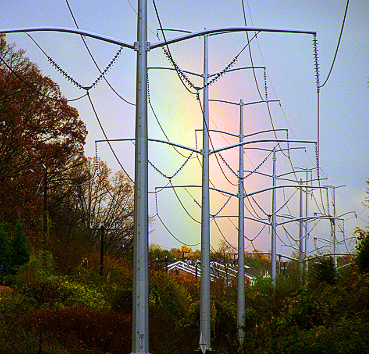Let’s say you were a very powerful being, something called Utility God. And let’s pretend you realized climate change was a big problem, and that it was something that needed to be solved using big strokes, not small measures. One of the big things you’d want to do, at least for the average Joe, would be to create a situation where homeowners would want to, would actually love to, save energy in their homes. You’d also use your magic wand to create a situation where renewable energy systems like solar panels had a much better payback than they currently do. Finally, you’d want to send a signal to really, really big users that there’s an environmental and infrastructural burden to the community if they use a dump-load of electricity — in the same way that if you used hundreds of thousands of gallons of water on your lawn, it impacts the rest of the community.
One way to get at this Über-solution, at least for residential customers, is called a “tiered” or “inclining block” rate structure. (I told you this would be fun!) That means, simply, that if you use more energy, you tend to pay more per unit of energy. But the average household isn’t affected. Most residential rates outside of California are not tiered, and some are even “declining blocks” meaning you pay less as you use more. That’s an incentive to waste. (Note that inclining block rate structures are typically associated with residential customers but could, arguably, be applied to businesses too. That’s another conversation though, since regulators are reluctant to penalize businesses for using more energy, and since businesses already pay “demand charges” for drawing a lot of energy.)
Under a tiered rate structure, you, the average person reading this, would pay the same old utility rate. But above, say, your average bill, the cost of your power might double, going from maybe 8 cents for a dishwasher load (one kilowatt hour) worth of energy to 16 cents. And at triple your bill, the rates might really skyrocket, to 25 cents a kilowatt hour. This rate structure would meet all the goals described above, and it would incentivize you to stay under that usage threshold where the price goes up; it would also encourage others to try to drop down to a lower tier. Meanwhile, this fee structure is what tax economists call “progressive,” in that the people who can probably afford to pay more (those with the bigger houses) do so, and the people who can least afford it are unaffected.
What do you do with the added revenue? There are some regulatory complexities here, but maybe you use that revenue to help everyone — big house and small house dwellers — save money and get more efficient through rebates on appliances, thermostats, solar arrays, and insulation.
The city of Aspen, Colo., which has its own utility, has already implemented tiered rates, and now the big regional electric coop, Holy Cross Energy, is working on the same thing, encouraged by a citizen’s group that included nonprofit foundations, a corporation, and government entities. As a result of this collaborative effort, Holy Cross helped draft, then pass, legislation that provides legal cover for utilities wanting to implement inclining block rates; next up, they will design and implement a new rate structure. This is one answer to the recurring question I get from people: “If individual measures like changing light bulbs are too small to solve climate change, what can I do that actually means something?” Working in your region to implement tiered rates is a way to go after climate change at the scale necessary, and it’s something we’ve been able to do here in Western Colorado. For us, this work has been an incredibly encouraging sign of that rare beast sometimes sighted on the margins of our lives: progress.



